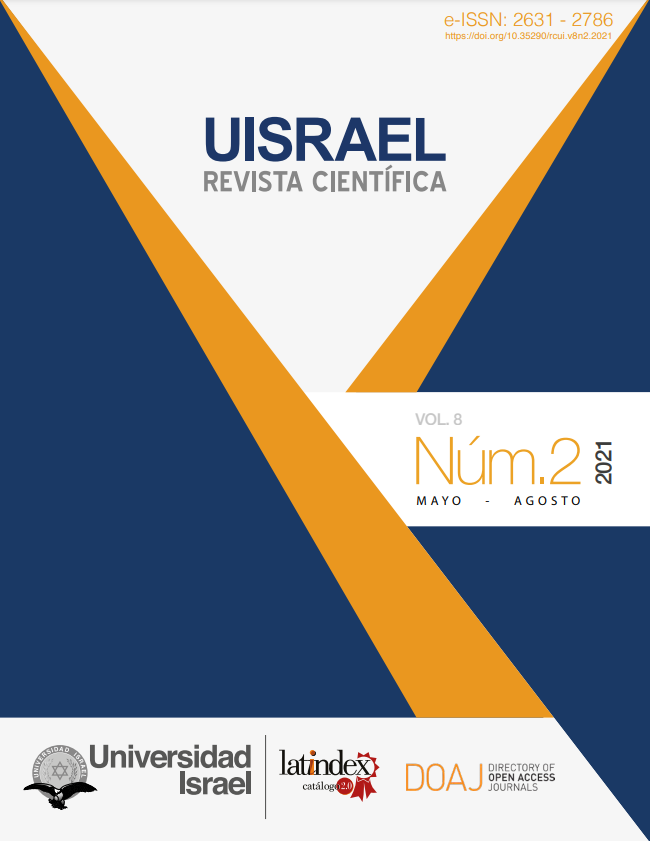La narración oral como herramienta pedagógica en la promoción de la ficción breve
DOI:
https://doi.org/10.35290/rcui.v8n2.2021.267Palabras clave:
texto, oralidad, literatura, discurso literario, estudiantesResumen
La literatura ha representado para muchos estudiantes la asignatura menos atractiva, casi siempre es relegada por aquellas en las que hay un nivel de actividad mayor, en las que el cuerpo en su totalidad está en constante movimiento (deportivas, manuales, lúdicas). El estudiantado manifiesta un gran desinterés por la lectura y la escritura, porque encuentra que la metodología de enseñanza es “aburrida”, “obsoleta” o simplemente “clásica” con la impartición de textos que solo tienen como objetivo una convencional comprobación del acto lector, por lo que no existe entre lector y texto una vinculación más profunda, más reveladora o significativa. Una relación que desemboque en una búsqueda de otras referencias, de otros paisajes, otras visiones sobre un mismo o varios temas. Este estudio tiene como objetivo facilitar un puente teórico y práctico entre los estudiantes y el texto breve, a través de la narración oral como una herramienta clave en este proceso. Ante esta problemática surgen dos interrogantes ¿Cómo acercar positivamente a los estudiantes al discurso literario? ¿Cómo contagiar el gusto por la disciplina literaria? Puede que, la respuesta a ambas cuestiones sea difícil de encontrar, pero, la narración oral, como un medio entre el acercamiento y la comprensión de estos textos es un camino ideal para comenzar a fomentar el deseo por la literatura, o en este caso, por la ficción breve.
Descargas
Referencias
Álamo, F. (2010). El microrrelato. Análisis, conformación y función de sus categorías narrativas. Signa: Revista de la Asociación Española de Semiótica, 19. http://revistas.uned.es/index.php/signa/article/viewFile/6233/5966
Barba Téllez, M. N. (2003). Creatividad, narración y metacognición en los escolares primarios. Celbrado en Guarulhos: Brasil.
Barrera, L. (1994). La narración mínima como estrategia pedagógica máxima. Perfiles Educativos. núm. 66, octubre-di. https://www.redalyc.org/pdf/132/13206603.pdf
Blasco Mira, J. E., & Pérez Turpin, J. A. (2007). Metodologías de investigación en educación física y deportes: ampliando horizontes. Editorial club universitario.
Bobes Naves, M. (1993). La Novela. Madrid: Síntesis.
Cadenas, R. (2002). En torno al lenguaje. Caracas – Venezuela: Otero Ediciones / Editorial CEC, S.A. El Nacional.
Epple, J. A. (1989). Brevísima relación del cuento breve de Chile. Santiago, Chile: LAR.
Fernández, V. (2000). 100 obras de literatura infantil del siglo XX: VI Simposio sobre literatura infantil y lectura. CLIJ: Cuadernos de literatura infantil y juvenil, 13(130), 56-60.
Garzón Céspedes, F. (2011). Cómo aprender a contar oralmente y a comunicarse mejor. El arte oral escénico de contar (teoría y técnica de la oralidad escénica insólita modular, las dos: Sus propuestas y creaciones al mundo. Editorial Adagio, Ministerio de Cultura, CNCC. La Habana.
Jean, G. (1988). El poder de los cuentos. Barcelona: Pirene.
Lomas, C. (1999). Cómo enseñar a hacer cosas con las palabras: teoría y práctica de la educación lingüística. Barcelona: Paidós.
Rojo, V. (1997). Breve manual para reconocer minicuentos. Libros del laberinto.
Tapia, M. T. P. (2011). El microrrelato: explotación didáctica en la clase de E/LE. In Del texto a la lengua: La aplicación de los textos a la enseñanza-aprendizaje del español L2-LE (pp. 1255-1270). Asociación para la Enseñanza del Español como Lengua Extranjera. https://dialnet.unirioja.es/servlet/articulo?codigo=5422349
Taylor, S. J., & Bogdan, R. (1987). Introducción a los métodos cualitativos de investigación (Vol. 1). Barcelona: Paidós.
Tejerina, I. (2010). La narración oral: Un arte al alcance de todos. Colección Estudios, Castilla de la Mancha: España.
Vivante, M. (2006). Didáctica de la literatura. Magisterio del Río de la Plata.
Zavala, L. (2006). La minificción bajo el microscopio. 1ª. Ed. C de México: Universidad Nacional Autónoma de México, 2006.
Zavala, L. (1993). Teorías del cuento, 3 vols. Teorías de los cuentistas (I), La escritura del cuento (II) y Poéticas de la brevedad (III). México, D.F.: UNAM.
Publicado
Número
Sección
Licencia
Derechos de autor 2021 Claudia Zuriaga Bravo e Ivo Leonel Pereira Díaz

Esta obra está bajo una licencia internacional Creative Commons Atribución 4.0.
Los autores que participen de los procesos de evaluación y publicación de sus ediciones conservan los derechos de autor y ceden a la revista el derecho a la primera publicación, tal como establecen las condiciones de reconocimiento en la licencia Creative Commons Reconocimiento 4.0 Internacional (CC BY), donde los autores autorizan el libre acceso a sus obras, permitiendo que los lectores copien, distribuyan y transmitan por diversos medios, garantizando una amplia difusión del conocimiento científico publicado.
- Toda derivación, a partir de esta obra, deberá citar la fuente y a la primera publicación en esta revista. Se permiten derechos comerciales no lucrativos sobre sus contenidos.
- Los autores pueden realizar otros acuerdos contractuales independientes y adicionales para la distribución no exclusiva de la versión del artículo publicado en esta revista, es decir, podrán incluirlo en un repositorio institucional o publicarlo en un libro, siempre que indiquen claramente que el trabajo se publicó por primera vez en esta revista.
- Se permite y recomienda a los autores compartir su trabajo en línea, con la finalidad de intercambios productivos para una mayor y más rápida citación del trabajo como lo establece los efectos del movimiento ‘Acceso Abierto’.
- No puede aplicar términos legales o medidas tecnológicas que restrinjan legalmente a otros de hacer cualquier cosa que permita la licencia: https://creativecommons.org/licenses/by/4.0/deed.es
- La Revista Científica es financiada completamente de los aportes realizados por nuestra entidad editora: Universidad Tecnológica Israel; por tal motivo, no establece cargos o cobros de ninguna índole a sus autores y colaboradores, así como tampoco genera pagos o remuneraciones de ningún tipo a ellos.
- Se asignará un Digital Object Identifier (DOI) a cada publicación.







